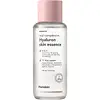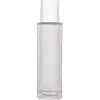What's inside
What's inside
 Key Ingredients
Key Ingredients

 Benefits
Benefits

 Concerns
Concerns

No concerns
 Ingredients Side-by-side
Ingredients Side-by-side

Water
Skin ConditioningGlycerin
HumectantButylene Glycol
HumectantPentylene Glycol
Skin ConditioningLinum Usitatissimum Seed Extract
PerfumingHydrolyzed Collagen
EmollientRhus Semialata Extract
Skin ConditioningGynostemma Pentaphyllum Leaf/Stem Extract
AntioxidantZostera Marina Extract
Skin ConditioningCeramide AP
Skin Conditioning1,2-Hexanediol
Skin ConditioningSodium Hyaluronate
HumectantHydroxyethylcellulose
Emulsion StabilisingCitric Acid
BufferingSodium Citrate
BufferingHydrolyzed Hyaluronic Acid
HumectantSaccharide Isomerate
HumectantHydrolyzed Algin
Disodium EDTA
Phenoxyethanol
PreservativeWater, Glycerin, Butylene Glycol, Pentylene Glycol, Linum Usitatissimum Seed Extract, Hydrolyzed Collagen, Rhus Semialata Extract, Gynostemma Pentaphyllum Leaf/Stem Extract, Zostera Marina Extract, Ceramide AP, 1,2-Hexanediol, Sodium Hyaluronate, Hydroxyethylcellulose, Citric Acid, Sodium Citrate, Hydrolyzed Hyaluronic Acid, Saccharide Isomerate, Hydrolyzed Algin, Disodium EDTA, Phenoxyethanol
Water
Skin ConditioningGlycerin
HumectantNiacinamide
Smoothing1,2-Hexanediol
Skin ConditioningBetaine
HumectantPanthenol
Skin ConditioningNelumbo Nucifera Leaf Extract
Skin ConditioningBambusa Vulgaris Water
Skin ConditioningSodium Hyaluronate
HumectantAllantoin
Skin ConditioningRaphanus Sativus Leaf Extract
HumectantAdenosine
Skin ConditioningCryptomeria Japonica Leaf Extract
HumectantSaccharomyces Ferment
Skin ConditioningGlyceryl Caprylate
EmollientBiosaccharide Gum-1
HumectantEthylhexylglycerin
Skin ConditioningPhytic Acid
Polyacrylate Crosspolymer-6
Emulsion StabilisingButylene Glycol
HumectantPolyglyceryl-10 Caprylate/Caprate
EmulsifyingPolyglyceryl-10 Oleate
Skin ConditioningPolyglyceryl-10 Laurate
Skin ConditioningEucalyptus Globulus Leaf Oil
PerfumingWater, Glycerin, Niacinamide, 1,2-Hexanediol, Betaine, Panthenol, Nelumbo Nucifera Leaf Extract, Bambusa Vulgaris Water, Sodium Hyaluronate, Allantoin, Raphanus Sativus Leaf Extract, Adenosine, Cryptomeria Japonica Leaf Extract, Saccharomyces Ferment, Glyceryl Caprylate, Biosaccharide Gum-1, Ethylhexylglycerin, Phytic Acid, Polyacrylate Crosspolymer-6, Butylene Glycol, Polyglyceryl-10 Caprylate/Caprate, Polyglyceryl-10 Oleate, Polyglyceryl-10 Laurate, Eucalyptus Globulus Leaf Oil
 Reviews
Reviews

Ingredients Explained
These ingredients are found in both products.
Ingredients higher up in an ingredient list are typically present in a larger amount.
1,2-Hexanediol is a synthetic liquid and another multi-functional powerhouse.
It is a:
- Humectant, drawing moisture into the skin
- Emollient, helping to soften skin
- Solvent, dispersing and stabilizing formulas
- Preservative booster, enhancing the antimicrobial activity of other preservatives
Butylene Glycol (or BG) is used within cosmetic products for a few different reasons:
Overall, Butylene Glycol is a safe and well-rounded ingredient that works well with other ingredients.
Though this ingredient works well with most skin types, some people with sensitive skin may experience a reaction such as allergic rashes, closed comedones, or itchiness.
Learn more about Butylene GlycolGlycerin is already naturally found in your skin. It helps moisturize and protect your skin.
A study from 2016 found glycerin to be more effective as a humectant than AHAs and hyaluronic acid.
As a humectant, it helps the skin stay hydrated by pulling moisture to your skin. The low molecular weight of glycerin allows it to pull moisture into the deeper layers of your skin.
Hydrated skin improves your skin barrier; Your skin barrier helps protect against irritants and bacteria.
Glycerin has also been found to have antimicrobial and antiviral properties. Due to these properties, glycerin is often used in wound and burn treatments.
In cosmetics, glycerin is usually derived from plants such as soybean or palm. However, it can also be sourced from animals, such as tallow or animal fat.
This ingredient is organic, colorless, odorless, and non-toxic.
Glycerin is the name for this ingredient in American English. British English uses Glycerol/Glycerine.
Learn more about GlycerinSodium Hyaluronate is hyaluronic acid's salt form. It is commonly derived from the sodium salt of hyaluronic acid.
Like hyaluronic acid, it is great at holding water and acts as a humectant. This makes it a great skin hydrating ingredient.
Sodium Hyaluronate is naturally occurring in our bodies and is mostly found in eye fluid and joints.
These are some other common types of Hyaluronic Acid:
Learn more about Sodium HyaluronateWater. It's the most common cosmetic ingredient of all. You'll usually see it at the top of ingredient lists, meaning that it makes up the largest part of the product.
So why is it so popular? Water most often acts as a solvent - this means that it helps dissolve other ingredients into the formulation.
You'll also recognize water as that liquid we all need to stay alive. If you see this, drink a glass of water. Stay hydrated!
Learn more about Water